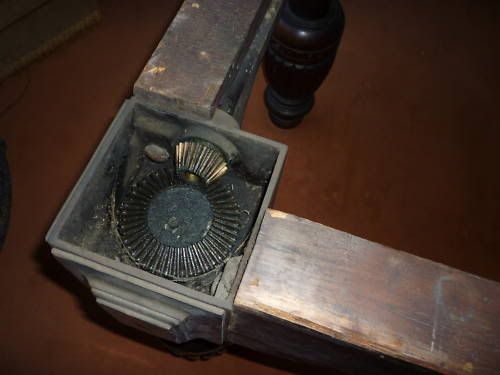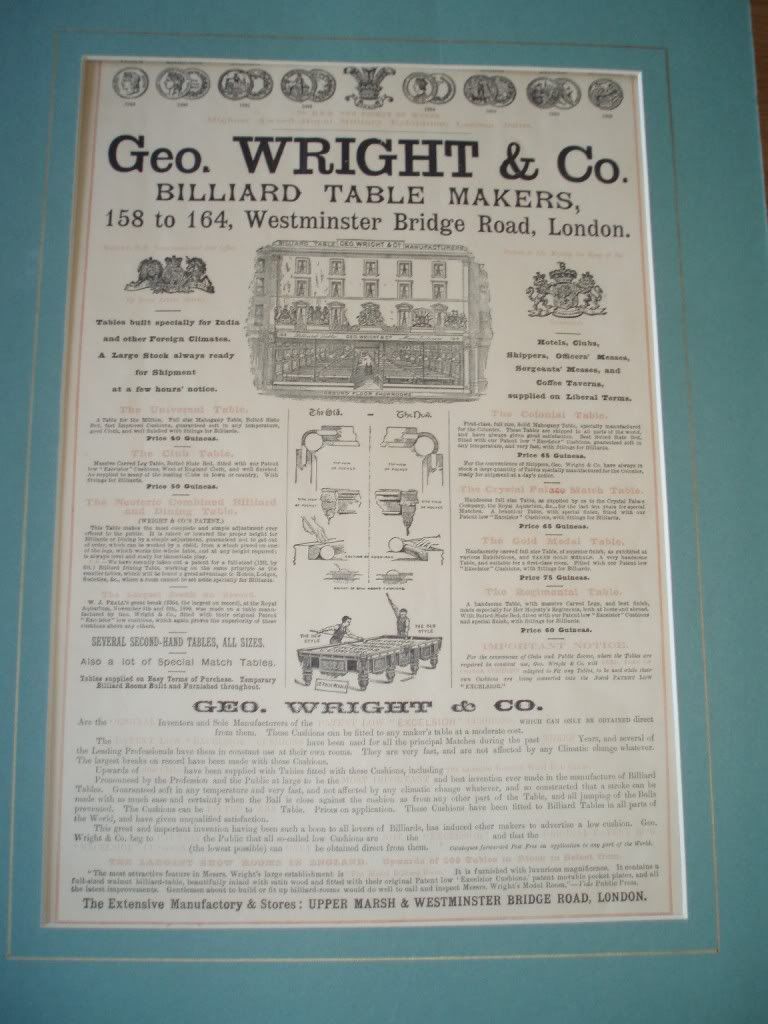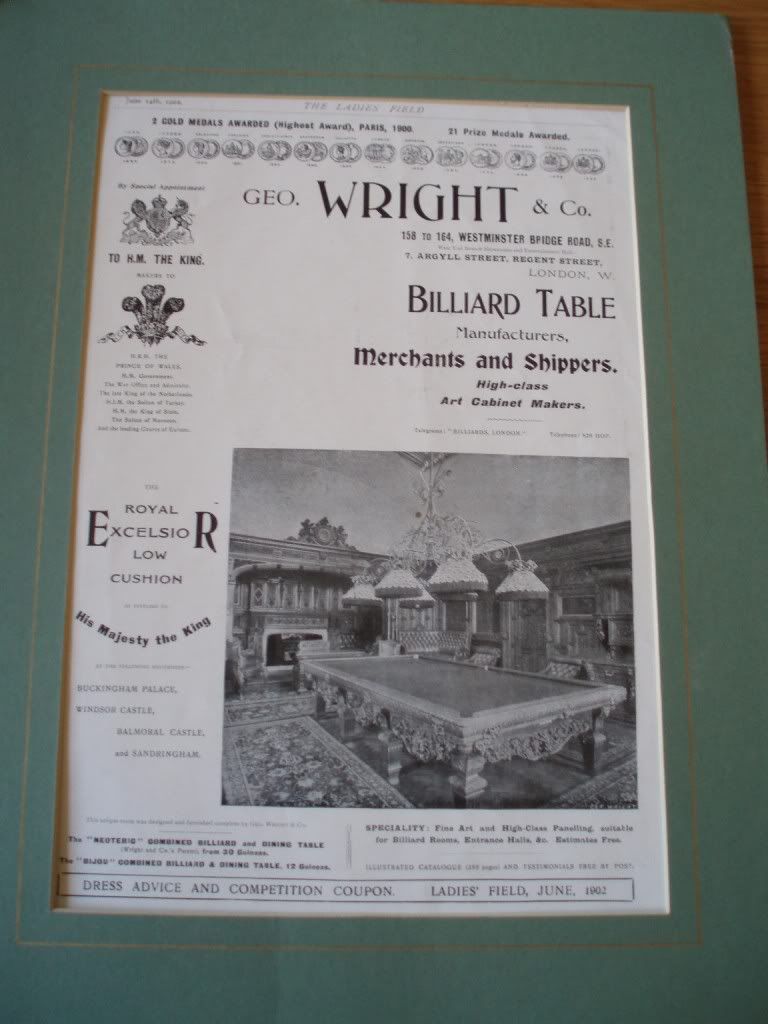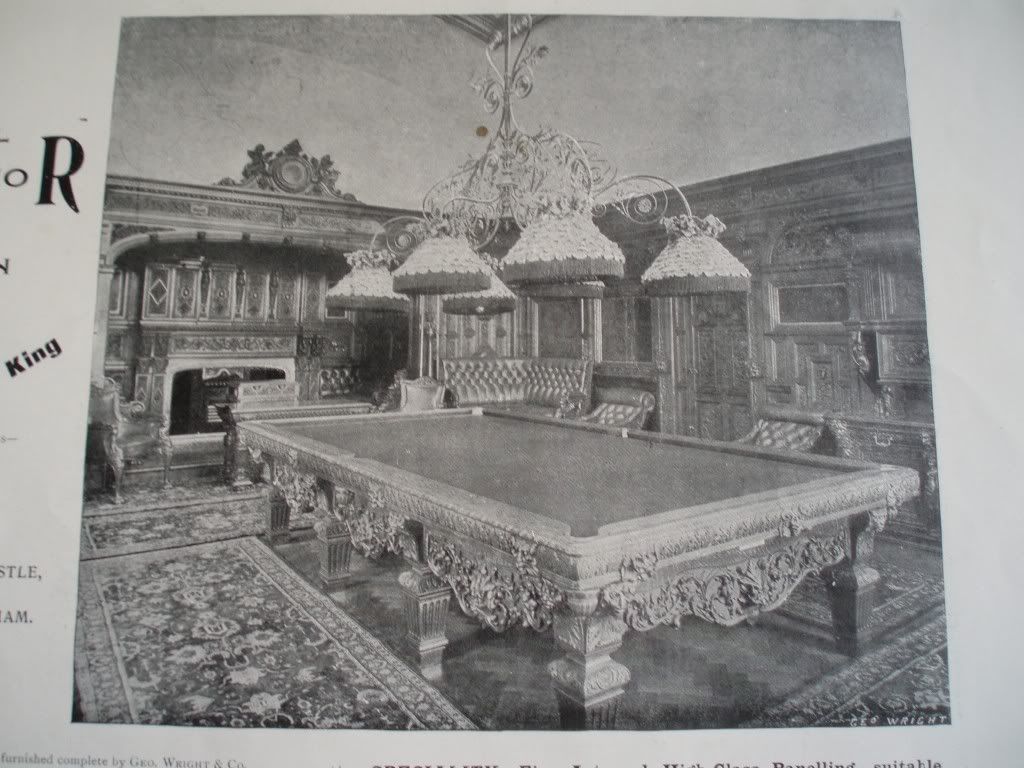just got back from Essex , I will be posting a few pictures soon on the gillows table .
the leveling foot plate that has a hole in the side is a common fixing on some smaller tables , and various makers have used it , such as Jelk's , Palmer , John bennet etc .
full sized tables have very heavy slates , they where not used to level these , due to the thread not being strong enough and making table unsturdy , I think some very early thin slate tables in full size form where fitted with them and seem to remember one that I have worked on having them , but I am sure as some floors require the thread part to exit by sometimes 2 inch , this made the tables wobble .
But when you think about it , the clare thurston jubilee model has threaded bar bolt ontop of the rotunda's , but after adjustment there is also other bolts to lock off to prevent wobble and make the table frame very stiff and sturdy .
The worst tables I have come across for unsturdyness is the Riley starline , which the slates are ontop of adjustable scissor trestle's , you could lean on the table as youre oponent takes a shot and make his ball roll off , I kid you not , they where that unstable !!!
Enbild also made a under frame adjustment table useing threaded bar bolt , but I think was a bit of a filure as these also wobble with the more thread that was showing , they did have lock off bolts , but the design was flimsy .so they discontinued them .
one of the establishments near Southend that I have been to this week have a George wright full size table for sale , with 8 inch readed legs , a burroughs and watts rerubber plate is on one end cushion , and the original george wright plate on the other end cush .
table is in good ciondition woodwork wise , but will require new rubber and cloth , plus nets and leathers etc .
they are looking for around £650+ for it , it is on a ground floor with easy access from a rear carpark .
Other makes that I have worked on this week where a 9ft Palmer and sons circa 1910 and a 10ft with 6 tulip legs , no name plate , but very thin 4 section slate bed making it around 1870/80ish .
and of course the Gillows full size circa 1820/30s .
I am in the worshop tommorow in lincolnshire , a simple day in just a set of B&Watts steel blocks to recover , and look over a table we have just sold for a shade over £10.000.00p. a very nice Orme & sons in Burr honey oak , with ebony embelishments and mouldings , Bargain price due to resession realy as it was priced up at £17.500.00p .
But we are not a museum and tables have to be sold once they are refurbished .
and I also have heard we are close to a sale of the Geroge Wright lions head table that we also have in our specials list of tables for sale .
Geoff
the leveling foot plate that has a hole in the side is a common fixing on some smaller tables , and various makers have used it , such as Jelk's , Palmer , John bennet etc .
full sized tables have very heavy slates , they where not used to level these , due to the thread not being strong enough and making table unsturdy , I think some very early thin slate tables in full size form where fitted with them and seem to remember one that I have worked on having them , but I am sure as some floors require the thread part to exit by sometimes 2 inch , this made the tables wobble .
But when you think about it , the clare thurston jubilee model has threaded bar bolt ontop of the rotunda's , but after adjustment there is also other bolts to lock off to prevent wobble and make the table frame very stiff and sturdy .
The worst tables I have come across for unsturdyness is the Riley starline , which the slates are ontop of adjustable scissor trestle's , you could lean on the table as youre oponent takes a shot and make his ball roll off , I kid you not , they where that unstable !!!
Enbild also made a under frame adjustment table useing threaded bar bolt , but I think was a bit of a filure as these also wobble with the more thread that was showing , they did have lock off bolts , but the design was flimsy .so they discontinued them .
one of the establishments near Southend that I have been to this week have a George wright full size table for sale , with 8 inch readed legs , a burroughs and watts rerubber plate is on one end cushion , and the original george wright plate on the other end cush .
table is in good ciondition woodwork wise , but will require new rubber and cloth , plus nets and leathers etc .
they are looking for around £650+ for it , it is on a ground floor with easy access from a rear carpark .
Other makes that I have worked on this week where a 9ft Palmer and sons circa 1910 and a 10ft with 6 tulip legs , no name plate , but very thin 4 section slate bed making it around 1870/80ish .
and of course the Gillows full size circa 1820/30s .
I am in the worshop tommorow in lincolnshire , a simple day in just a set of B&Watts steel blocks to recover , and look over a table we have just sold for a shade over £10.000.00p. a very nice Orme & sons in Burr honey oak , with ebony embelishments and mouldings , Bargain price due to resession realy as it was priced up at £17.500.00p .
But we are not a museum and tables have to be sold once they are refurbished .
and I also have heard we are close to a sale of the Geroge Wright lions head table that we also have in our specials list of tables for sale .
Geoff







Comment